| Revista Umělec 2006/3 >> Art Comics is not a Bubble Gum at All | Lista de todas las ediciones | ||||||||||||
|
|||||||||||||
Art Comics is not a Bubble Gum at AllRevista Umělec 2006/301.03.2006 Anna Charkina | sonda | en cs de |
|||||||||||||
|
In Soviet times, the public’s attitude towards comics was no better than its attitude towards bubble gum. Both of them were short-range missiles used in ideological arguments about the ability of capitalism to make people stupid. Thoughtless gum chewing and thoughtless gazing at picture books (with text placed in a bubble) were symbols of the baneful influence of the market economy on unstable minds of the rising generation. However, to satisfy soviet children’s interest in this production, children’s magazines such as Merry Pictures and Murzilka issued simple comic stories. Soviet bubble gum also existed; however, it was not possible to make a bubble with it.
Even today though, the attitude towards comics as something childish remains. It might have only been during the last year or two that the development of visual culture in the former Soviet Union has given rise to the idea that comics can be works of art as well as illustrations in books, TV station identifications, or CD covers. Past attempts to issue comic books along with other books were not of great success. In the early 2000s, the small Russian publishing house Nitusov released a few hard-back color graphic novels to an unreceptive market. But lately, the publication of comic books has expanded to large scale publishing houses. Amfora, which usually specializes in literature, in 2005 issued "Sin City" by Frank Miller. However, publishers prefer to issue popular Western strips translated into Russian or Russian stories based upon popular movies or books. Meanwhile, groups of young artists keen on comics have begun to show up. Possessed by drawing they do it not for money, but as a way to pass the time. They even risk spending their own money in order to publish their comic books and organize exhibitions and festivals. These artist unions appear in different cities from time to time. In Ufa (Tatarstan Republic) in 1990, Fly Studio appeared and began issuing a self-titled comic magazine. They had a large circulation, but the Russian economic crisis put a stop to it. This forced them to change their focus, leading them to found video studios and begin to make music videos. While Publishers Meditate, Dead Fish People Publishes In Moscow, the initiative to organize comic book artists was taken up by a happy and enterprising person by the name of Khikhus. Dead Fish People (http://xixyc.mrtech.ru) appeared on the basis of the science fiction magazine Fantom and united artists, animators, and script-writers from different parts of the country. Since 2003, they have been publishing The Anthology of Drawn Stories, Graphic Novels, and Comic Strips, which is called Dead Fish Race if too many of the “people” are participating. Dead Fish People are the main organizers of the ComMission Festival, which has been celebrated at the M’ARS Contemporary Art Center in Moscow for five years. Now, the members of Dead Fish People are very successful artists who receive big salaries from advertising agencies. According to Khikhus they continue to draw comics because “publicity is shit and someone has to make real art.” Formerly though, they were severely punished for the real art: they were not admitted into the Komsomol, samizdat were seized and kvartirniki (exhibitions organized in private apartments) were attacked. The regular attacks accustomed all the artists to the interest in comics shown by the KGB at Lubyanka which is on the same level as some progressive communities in the West. In 1989, Khikhus could no longer stand the harassment and emigrated to West Germany, where he was accepted as a political refugee because he presented a tooth knocked out by a KGB agemt in a private apartment. However, Khikhus did not feel at home in West Germany. Having suffered for comics he was only known as “a person who had suffered for comics.” Besides, comics in Europe and comics in Russia a re different things; in Europe, comics enjoy a lengthy tradition. In Russia, “it is necessary to work a lot on the culture,” which Xixyc is still doing. “Everybody knows that we are “gangsters who scorn pure art,” our works are “pictures for morons,” our Muse is “mad radioactive mutants,” says People about themselves. Though it’s very likely many people find this detonating mixture quite attractive. Every year the ComMission Festival gathers pace and represents new projects, ideas, and participants from different countries. This year, Luxembourg and the Czech Republic joined “beloved for years” France, Belgium, Switzerland, Italy, Japanese, Poland, Slovenia, and Ukraine. The festival website (www.kommissia.ru) was upgraded and enlarged to allow all to represent their works and to encourage boisterous discussions. One of the Festival’s main objectives is to destroy the myth that comics must be funny, but unfortunately, thoughtful stories do not receive recognition. Master classes, lectures, and a fanzine convention constitute part of the educational process aimed at popularizing comics; however, most important is to network, exhibit, and view. Meanwhile in St. Petersburg While events in Moscow representing comics arouse the interest of the public and the press, Petersburg comic book artists carve their own way to recognition. In the northern capital, there are several groups of young artists who are fond of studying and drawing comics. Most of them are not professional unions, but, clubs of members united in accordance with their interests. However, the most persistent ones gradually achieve notable success through the strength of their enthusiasm. One of the most interesting groups is SPb. Nouvelles Graphiques. This company of friends fond of anime and manga became an art group after their first exhibition in the Médiathèque of the French Institute in St. Petersburg in February 2004. Dima Yakovlev, the manager of the group, was also the curator of the exhibition from which the art group took their name. All SPb. Nouvelles Graphiques members: Re-I, TATKA, Ezh, Elruu, Namida, Ilya Maksimov, and Roma Sokolov are formerly or at present artists for the Melnitsa animation studio that has released the popular animation film Alesha Popovich and Tugarin the Snake. Passion for Japanese comics has been a notable influence on the works of SPb. Nouvelles Graphiques, however, they consider comic strips of French-speaking countries their basic ideal. At first, SPb. Nouvelles Graphiques was just a kind of club for artists with common interests. However, in 2005, they managed to surpass amateur limits. They issued their first collection entitled, “Fairytale?” The story was about spirits and animals who wanted to find a friend for a girl living in their neighborhood. The book was an illustrated philosophical parable about loneliness. Every participant in the project had to decide the appearance of one of the characters and draw one chapter. Though the plotline had been written beforehand, the chapters looked like separate stories or stories within the story. However, the book looked like a single whole in spite of the artist’s stylistic differences. The group’s second book was entitled “ЧПХ" derived from the Moscow expression "Чисто питерская х…” (“Purely Peter’s Crud”), a Muscovite term for vague reasoning about abstract things. The book united a number of independent projects created by group members. This album was black and white, which may be why it sold better than the previous color one in self-restrained Petersburg. The members of SPb. Nouvelles Graphiques are not going to rest on their laurels. In the near future, they plan to issue a new collection of comics about Petersburg, entitled “Fantasies of Peter’s Streets”, The story of Napoleon Bonaparte entitled “Napoleon is Always Happy,” and a collection of comics for children. They also negotiated with Tomáš Prokupek, editor of the Czech magazine AAARH, an agreement to edit Czech comics in Russia and Russian comics in the Czech Republic. These days, comic book artists from Petersburg organize presentations of their works in youth cafes, fashionable parties, and even at the fortress at the St. Petersburg waterfront. They meet with other obsessive drawers biannually at the ComMission Festival in Moscow or the “Ninth World” Festival in Kiev. As the popularity of comic books grows, it arouses hopes that serious publishing houses will pay attention to this bit of youth culture and support those art comics generated at home in Russia.
01.03.2006
Artículos recomendados
|
|||||||||||||
|
04.02.2020 10:17
Letošní 50. ročník Art Basel přilákal celkem 93 000 návštěvníků a sběratelů z 80 zemí světa. 290 prémiových galerií představilo umělecká díla od počátku 20. století až po současnost. Hlavní sektor přehlídky, tradičně v prvním patře výstavního prostoru, představil 232 předních galerií z celého světa nabízející umění nejvyšší kvality. Veletrh ukázal vzestupný trend prodeje prostřednictvím galerií jak soukromým sbírkám, tak i institucím. Kromě hlavního veletrhu stály za návštěvu i ty přidružené: Volta, Liste a Photo Basel, k tomu doprovodné programy a výstavy v místních institucích, které kvalitou daleko přesahují hranice města tj. Kunsthalle Basel, Kunstmuseum, Tinguely muzeum nebo Fondation Beyeler.
|








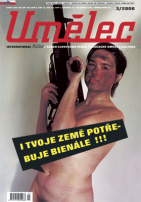







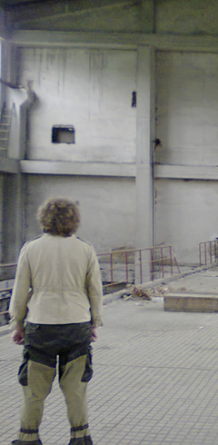











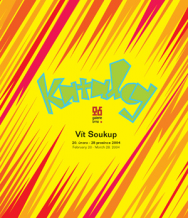
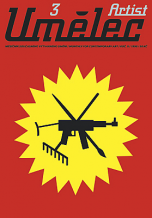

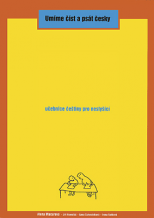


 We Are Rising National Gallery For You! Go to Kyjov by Krásná Lípa no.37.
We Are Rising National Gallery For You! Go to Kyjov by Krásná Lípa no.37.
Comentarios
Actualmente no hay comentariosAgregar nuevo comentario